Dealing with a soggy garden or pools of rainwater can be a headache for any homeowner. Learning to install a French drain is an effective DIY solution that can keep your outdoor spaces dry and mold-free. With our clear and instructive guide, discover the ins and outs of making a trench and piping-based drainage system that caters to various spaces, situations, and budgets. Utilizing landscape fabric and gravel, these 20 easy DIY french drain installation guides are not only efficient but also tailored to enhance the health and value of your property.
Embarking on your DIY French drain installation project can seem daunting, but with our straightforward guides, it’s within your grasp. We lay out the process in manageable steps, equipping you with the know-how to protect your home’s foundation and keep your lawn in tip-top shape. As you prepare to delve deeper into the nuts and bolts of drainage systems, our engaging and relevant tips will set you up for success. So, gear up to transform your waterlogged areas into well-drained havens.
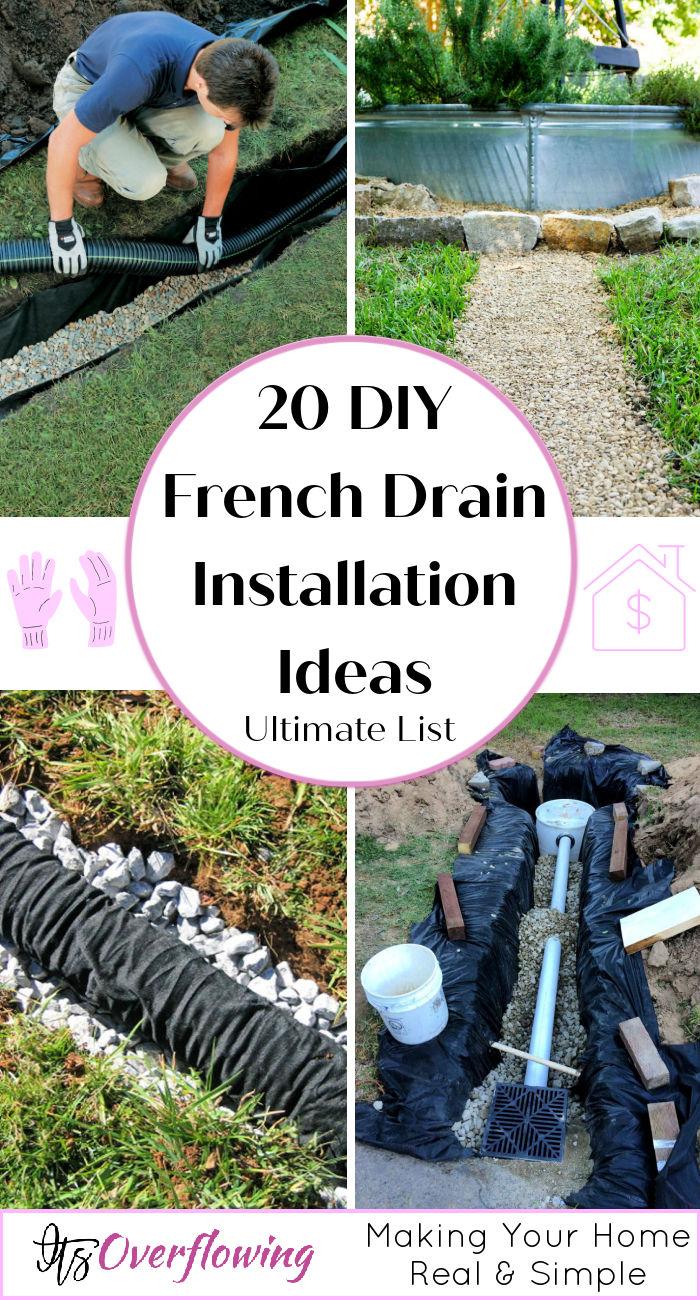
Why Install a French Drain?
Discover the benefits of installing a French drain and how it can help solve drainage issues effectively.
- Protects Your Property: A French drain system helps to prevent water damage to your home’s foundation and landscaping. By directing excess water away, you avoid the costly repairs that come with water infiltration.
- Enhances Yard Health: Soggy lawns and gardens can suffer from mold, fungus, and root rot. A French drain keeps the ground appropriately drained, promoting a healthier, more attractive outdoor space.
- Reduces Mosquito Breeding: Standing water is a breeding ground for mosquitoes. With a French drain, you eliminate these pools, reducing the mosquito population in your yard and the associated health risks.
- Increases Property Value: A well-drained property is a valuable asset. Potential homebuyers will appreciate the proactive step you’ve taken to protect the home from water damage, making your property more desirable.
- Easy Maintenance: Once installed, French drains require minimal maintenance. Regular checks and the occasional cleaning to remove debris are typically all that’s needed, saving you time and hassle in the long run.
- DIY Friendly: Many homeowners can install a French drain themselves with the right guidance. It’s a cost-effective solution that provides a sense of accomplishment and self-reliance.
- Eco-friendly Option: By managing water runoff naturally, French drains help to replenish the groundwater and reduce erosion, benefiting the wider environment.
Installing a French drain is a wise decision for homeowners looking to secure their property against water damage, improve yard health, and potentially increase the value of their home. It’s an eco-friendly choice that’s both practical and beneficial for your outdoor environment.
How to Install a French Drain in Your Yard
Installing a French Drain is a practical way to divert water away from your property and prevent waterlogging. Here’s a straightforward guide to help you install one efficiently.
Step 1: Plan Your Trench Route
Identify the Water Source: First, pinpoint where excess water tends to accumulate in your yard. This will be your starting point.
Determine the End Point: Decide where the water should be redirected, such as a drainage ditch or another area of your property that can handle additional moisture.
Step 2: Call Before You Dig
Safety First: Dial 811 to contact your local utility companies. They’ll mark any underground lines so you can avoid them during excavation.
Step 3: Dig the Trench
Create the Trench: Using a shovel, dig a trench that slopes away from your home. It should be about 6 inches wide and 18 to 24 inches deep, maintaining a consistent slope (about 1% or 1/8 inch per foot is recommended).
Step 4: Add Landscape Fabric and Gravel
Line the Trench: Cover the trench with landscape fabric, leaving enough excess on either side to wrap over the top of the finished drain.
Pour the Gravel: Fill the trench with a few inches of gravel. This helps with filtration and supports the pipe.
Step 5: Install the Perforated Pipe
Lay the Pipe: Place a perforated pipe on top of the gravel, ensuring it’s sloped correctly for water to flow.
Step 6: Cover the Pipe
Wrap the Fabric: Bring the excess landscape fabric over the top of the pipe to keep out sediment.
Add More Gravel: Cover the fabric with additional gravel, leaving about 5 inches to the top of the trench.
Step 7: Finish the Trench
Top with Soil: Fill the remaining space with soil. This can be the same soil you dug out or fresh topsoil.
Step 8: Test Your French Drain
Check the Flow: Pour water into the start of your trench to ensure it flows smoothly to the end point.
Step 9: Maintain Your French Drain
Regular Checks: Inspect and clear the openings of your French drain periodically to avoid clogs.
Annual Cleaning: Consider flushing your system annually to clear out sediment and maintain efficient water flow.
By following these steps, you can install a French Drain that will keep your property dry and healthy. Remember to always prioritize safety, and don’t hesitate to consult a professional if you encounter complex issues during the installation process.
How to Extend the Life of Your French Drain: Maintenance Tips
Maintaining your French drain is essential to ensure it continues to protect your property from water damage effectively. Here are some easy-to-follow, practical maintenance tips that will help keep your French drain working efficiently for years to come.
Regular Inspections
- Check for Clogs: Every few months, inspect the opening and exit point of your French drain for leaves, dirt, and debris that could cause blockages.
- Look for Signs of Erosion: Ensure that the areas around the inlet and outlet are stable and not eroding, which could indicate a problem.
Keep it Clean
- Clear Debris: Remove any visible debris from the drain’s mouth to prevent clogs that can hinder water flow.
- Flush the System: Annually, flush your French drain with a hose to clear out any sediment buildup inside the pipe.
Landscape Mindfully
- Choose Plants Wisely: Plant roots can invade and block your drain. Opt for shallow-rooted vegetation near your French drain.
- Avoid Heavy Mulch: Heavy mulch can wash into the drain during heavy rain. Use lighter, less dense mulching options.
Monitor Performance
- Observe During Rainfall: Watch how your French drain behaves during rain. If water isn’t flowing well or if pooling occurs, it may need attention.
- Assess Slope and Settlement: Occasionally check the slope of your drain. Over time, the ground may settle, altering the slope and efficiency.
Seek Professional Help When Needed
- Recognize Big Issues: If you consistently have standing water or the drain isn’t functioning properly after troubleshooting, it’s time to call in a professional.
By following these maintenance steps, you’ll ensure your French drain remains a reliable component of your property’s drainage system. Regular care can prevent costly repairs and keep your yard looking its best.
Frequently Asked Questions About DIY French Drain Installation
What is a French Drain?
A French drain is a trench filled with gravel or rock containing a perforated pipe that directs surface water and groundwater away from an area. It’s an effective way to prevent water pooling and protect your property from water damage.
Why should I install a French Drain?
- Property Protection: It prevents water damage to your home’s foundation and landscaping.
- Yard Health: It reduces soggy lawns and gardens prone to mold and root rot.
- Mosquito Reduction: By eliminating standing water, it helps in reducing the mosquito population.
- Property Value: A well-drained property is more desirable and can increase its value.
- Low Maintenance: Once installed, it requires minimal upkeep.
- DIY Friendly: With the right guidance, many homeowners can install it themselves.
- Eco-Friendly: It helps manage water runoff naturally and reduces erosion.
How do I plan the route for my French Drain?
- Identify Water Source: Determine where excess water accumulates in your yard.
- Decide End Point: Choose a location where the water will be redirected, like a drainage ditch.
What should I do before I start digging?
Always call 811 to contact local utility companies to mark underground lines to avoid damaging them during excavation.
How deep and wide should the trench be?
The trench should typically be about 6 inches wide and 18 to 24 inches deep, with a consistent slope (about 1% or 1/8 inch per foot is recommended) for effective drainage.
What materials do I need for a French Drain?
- Perforated pipe
- Landscape fabric
- Gravel or rock
- Shovel
- Topsoil for finishing
How do I maintain my French Drain?
- Regular Inspections: Check for clogs and signs of erosion periodically.
- Keep It Clean: Remove debris and flush the system annually.
- Landscape Mindfully: Choose shallow-rooted vegetation and avoid heavy mulch.
- Monitor Performance: Observe the drain during rainfall and assess the slope.
Can plants affect my French Drain?
Yes, plant roots can invade and block the drain. Opt for plants with shallow root systems and avoid planting trees close to the drain line.
What should I do if I encounter issues during installation?
If you face complex problems, it’s best to consult a professional. They can help ensure your French Drain is installed correctly and functions efficiently.
Remember, installing a French Drain can be a rewarding DIY project that protects your property and enhances your outdoor space. With these guidelines, you can approach the task with confidence.
DIY French Drain Installation Guides
Learn how to install a French drain with these easy-to-follow DIY guides. Make effective drainage systems for your property.
1. How to Install a French Drain – Step by Step
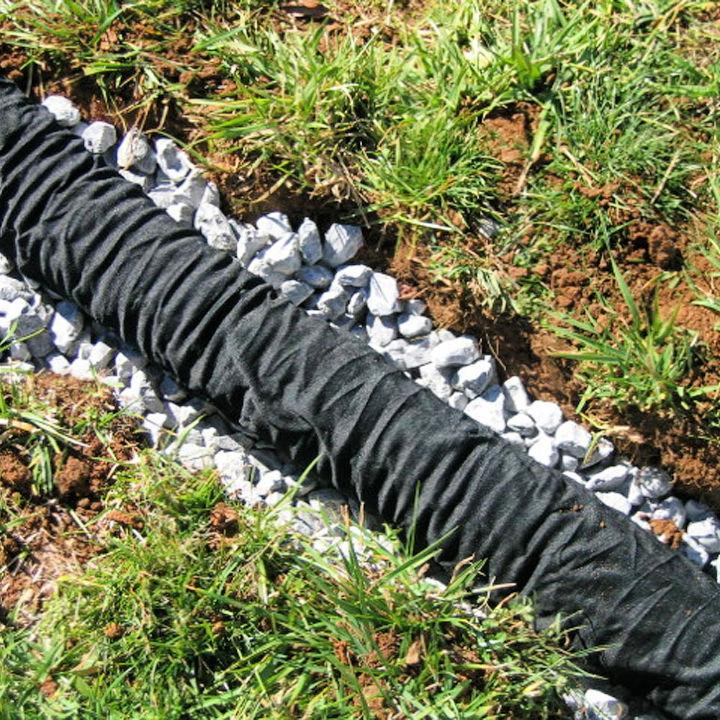
Struggling with water pooling in your yard? Installing a French drain can be your solution. This guide from The Home Depot offers step-by-step instructions on creating an effective water diversion system. Learn to plan your trench location, dig with proper slope, and install a drainage pipe to protect your property from water damage. With clear, concise directions, you can tackle this project with confidence, ensuring lasting results and a drier landscape. Remember, regular maintenance will keep your French drain functioning smoothly for years to come.
2. Build an Underground French Drain System
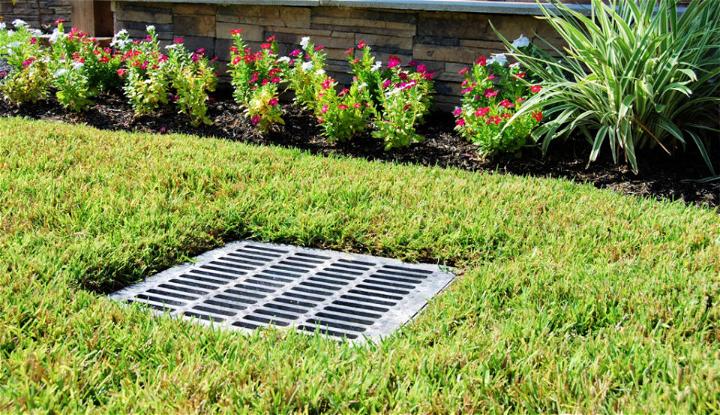
Eliminate standing water woes in your yard with a French drain, a proven solution to redirect excess moisture and protect your home’s foundation and landscape. Lowe’s offers a comprehensive guide to installing a French drain effectively. With careful planning and adherence to local regulations, you can tackle groundwater and surface-water issues head-on.
Remember to call 811 before you dig to avoid utility mishaps, and maintain your drain annually to ensure its optimal performance. Engage with this instructive and helpful resource to enhance your property’s drainage system.
3. DIY French Drain System Project
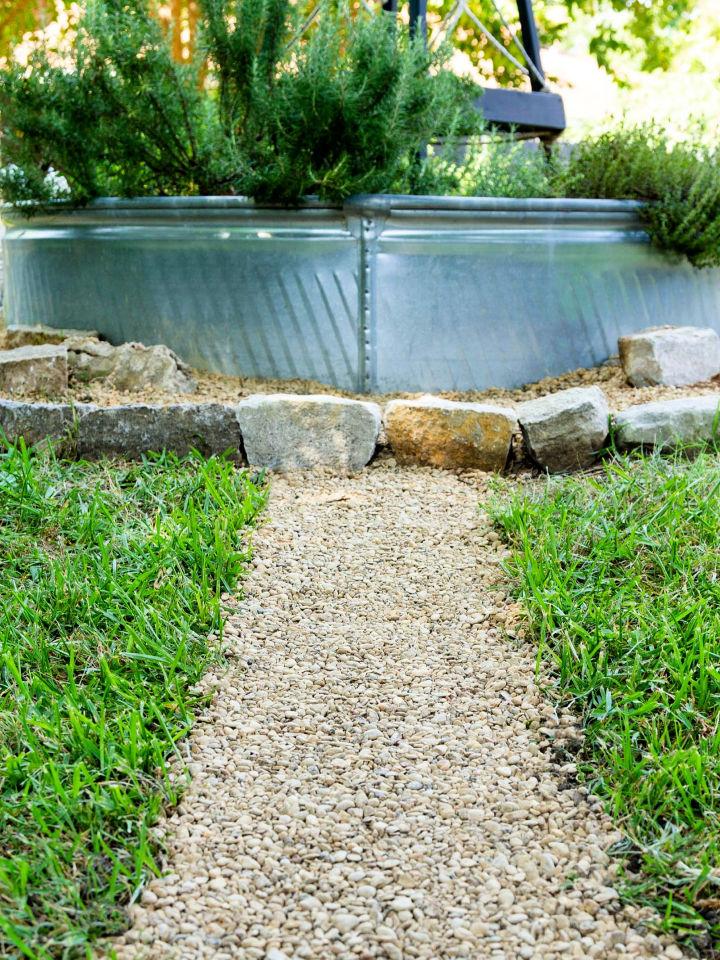
Installing a French drain is an effective method to divert groundwater away from your basement or foundation. HGTV provides a detailed guide to help homeowners undertake this project with confidence. By following clear instructions, you can ensure proper drainage around your property, preventing water damage and maintaining structural integrity.
The process involves digging a trench, laying a pipe, and filling it with gravel and landscape fabric. By doing so, excess water is channeled away, safeguarding your home. This DIY project requires some effort, but with the right tools and a step-by-step approach, you can achieve professional results and peace of mind.
4. How to Make a French Drain in the Backyard
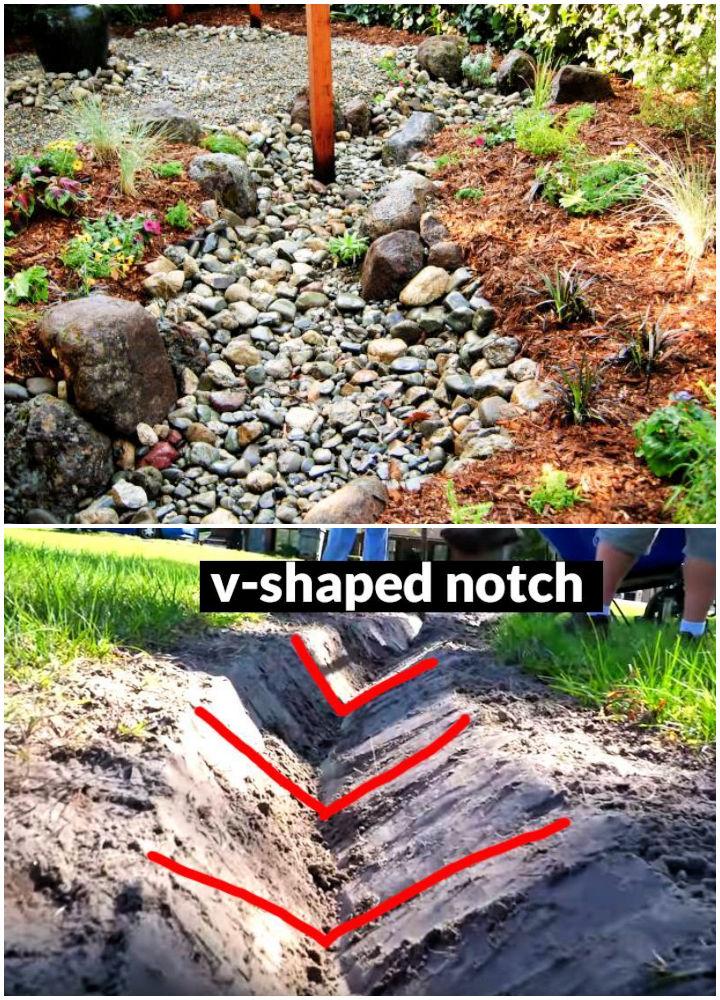
Struggling with water pooling in your yard? Pretty Purple Door‘s guide on installing a French drain offers a practical solution. A French drain is an underground system that redirects excess water, safeguarding your property from water damage. The guide walks you through each step with clarity—from planning the drain’s path to the final touches of landscaping.
With helpful tips on the ideal slope, depth, and materials, you can confidently tackle this DIY project. By the end, you’ll have a functional and potentially aesthetic addition to your landscape, ensuring your yard stays well-drained and beautiful.
5. Installation of French Drain With Written Instructions
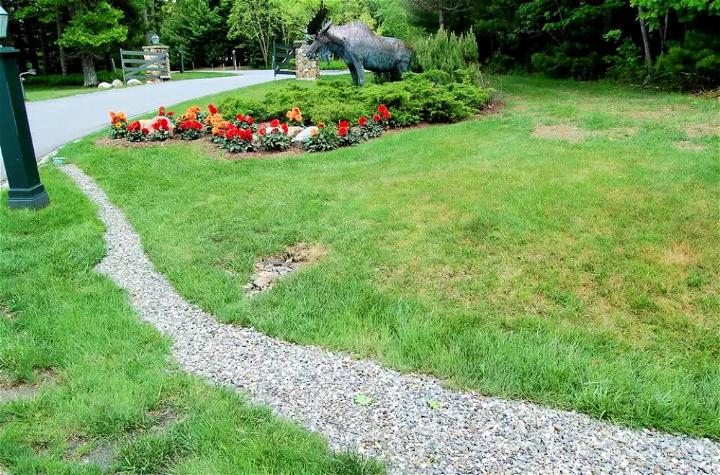
Struggling with waterlogged yards? A simple French drain could be the solution. The Spruce expertly guides you through creating an effective gravel-filled trench to channel excess surface water away from your property. With clear, step-by-step instructions, you’ll learn how to determine the ideal location for your drain, check local regulations, and properly slope your trench for maximum efficiency.
Discover how to line your trench with landscape fabric and fill it with crushed granite to keep your yard dry and healthy. For those facing more severe water issues, there’s advice on when to seek professional help. Get ready to improve your landscape’s drainage with this practical and informative guide.
6. How to Build a French Drain
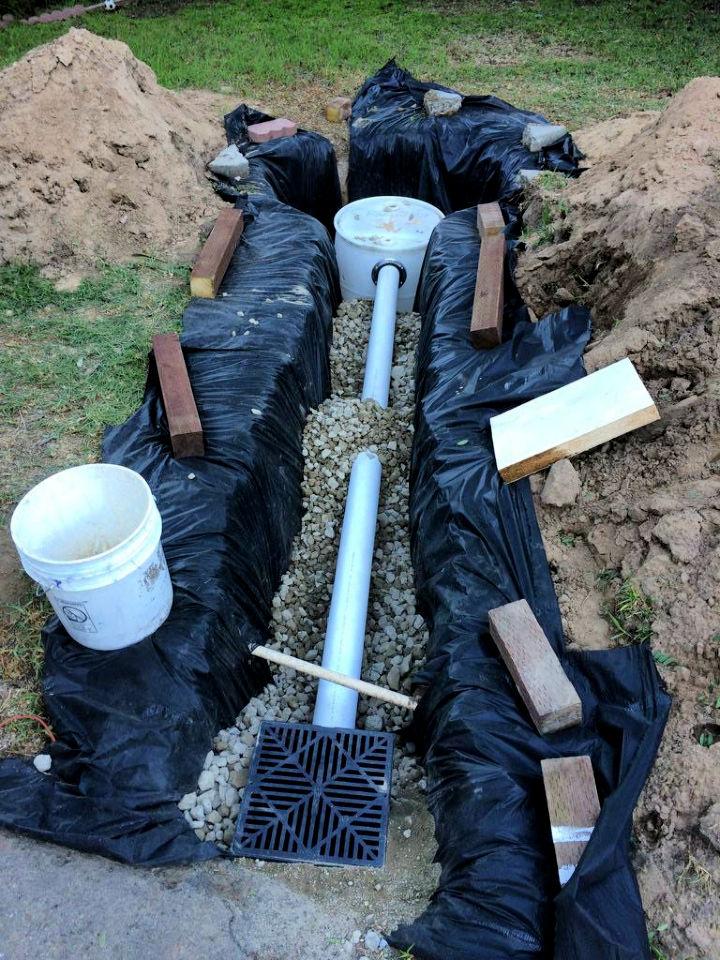
If you’re grappling with water accumulation in front of your garage or elsewhere on your property, Instructables offers a practical guide on installing a French Drain with a Dry Well. This step-by-step tutorial provides a detailed approach to diverting water away effectively, helping to keep your spaces dry and preventing potential water damage. The instructions are clear, making the process accessible for those looking to tackle drainage issues. With the right tools and materials, you can create a functional and efficient system to manage excess water on your property.
7. Quick and Easy DIY French Drain System
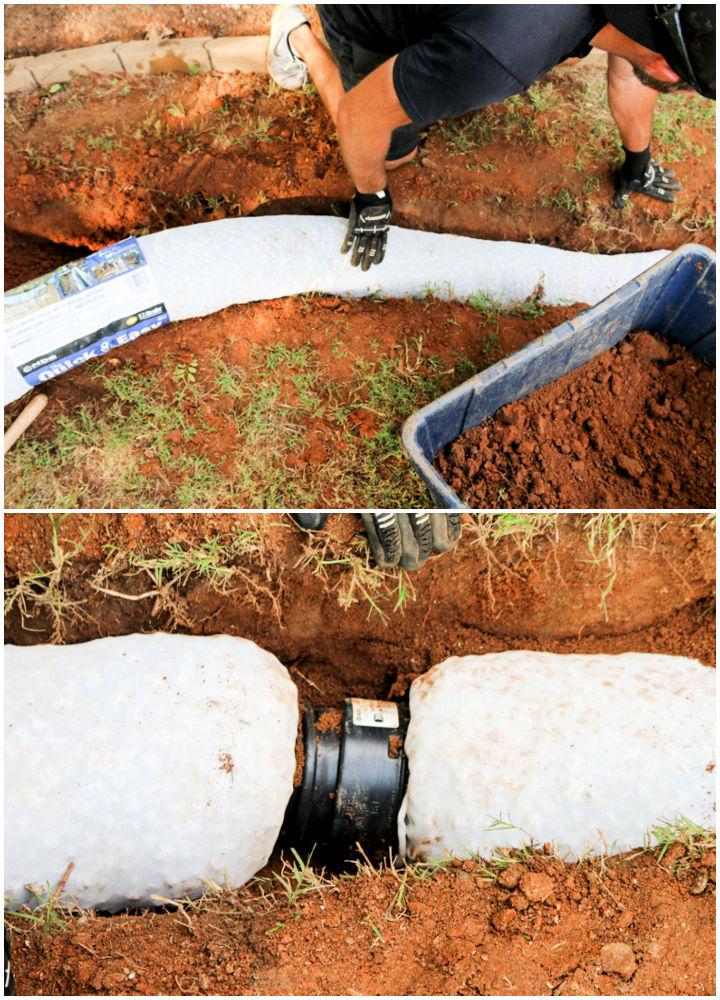
Struggling with waterlogged plants and messy mulch after every rainfall? Bower Power delivers a practical guide on installing an easy DIY French Drain to safeguard your garden’s vitality. Dive into their step-by-step process, where they simplify the task by using an all-in-one EZ Drain product, eliminating the need for hauling heavy gravel.
With a little digging and some strategic placement, this home project can prevent root rot and keep your landscape looking lush. Engaging and instructive, the guide empowers homeowners to tackle drainage issues with confidence, ensuring a thriving outdoor space.
8. Make an Outdoor French Drain
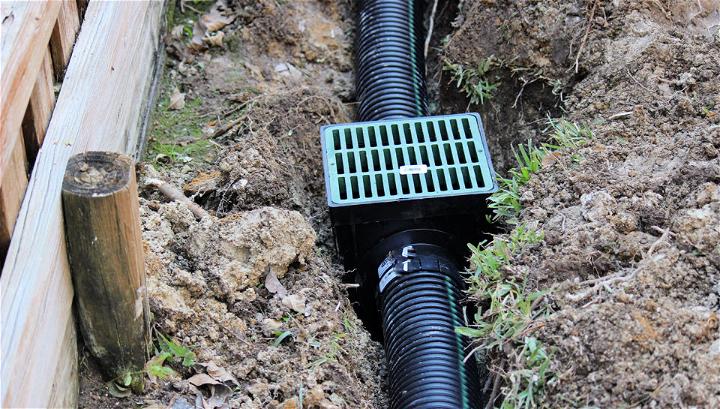
Ready to tackle excess water in your garden with a DIY French Drain? Lyngso Garden Materials offers a clear, step-by-step guide that simplifies the process. From choosing the right location to laying the perfect gravel bed, our instructions are designed to be helpful and engaging, ensuring your project’s success. With our expert advice, you’ll confidently manage water flow and enhance your landscape’s beauty and functionality. Dive into our resource for a straightforward, effective solution to soil erosion and water management.
9. Building a French Drain With Gravel and Rock
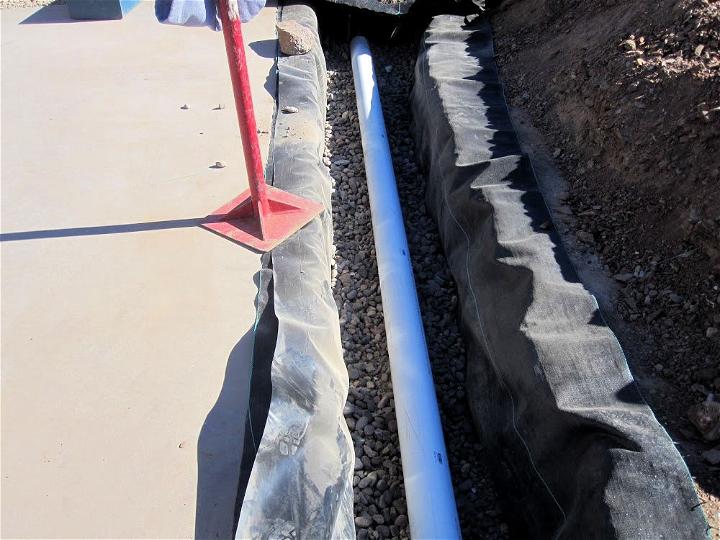
Installing a French drain is a practical solution to redirect water away from building foundations or to manage groundwater pressure behind retaining walls. On our website, you’ll find a clear, step-by-step guide on how to install a French drain system using perforated pipes. Our instructions are designed to be user-friendly, ensuring that even those new to DIY projects can confidently tackle the task.
Learn how to measure your pipe run, excavate the trench with proper grading, line it with landscape fabric, and finish with gravel and groundcover. We provide valuable tips to ensure your drainage project is successful, helping to protect your property from water damage. landscapedraina
10. How to Make a French Drain System
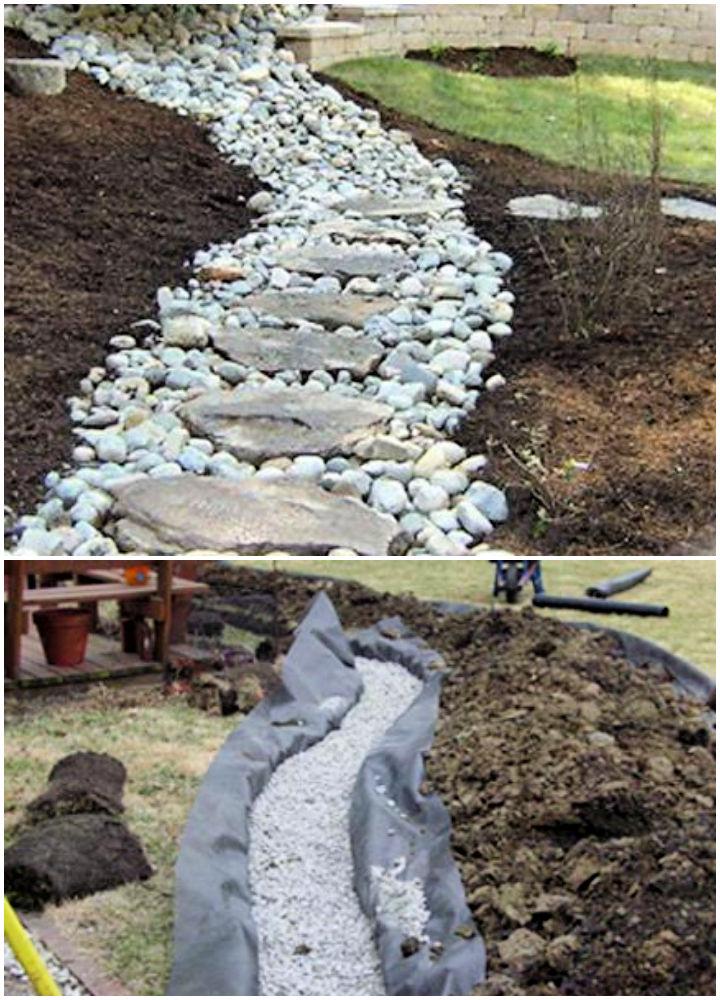
Understanding French drains and their role in residential water management is crucial for homeowners. A French drain is designed to divert excess water away from your property, preventing potential flooding and water damage. While they are typically underground and out of sight, it’s essential to recognize signs of malfunction, such as visible water pooling or basement moisture.
Regular inspections can ensure your French drain system functions effectively, maintaining a dry and secure home environment. If you notice any issues, consulting with a professional for maintenance or repair is a wise step to protect your property’s integrity. nachi
11. Build Your Own French Drain
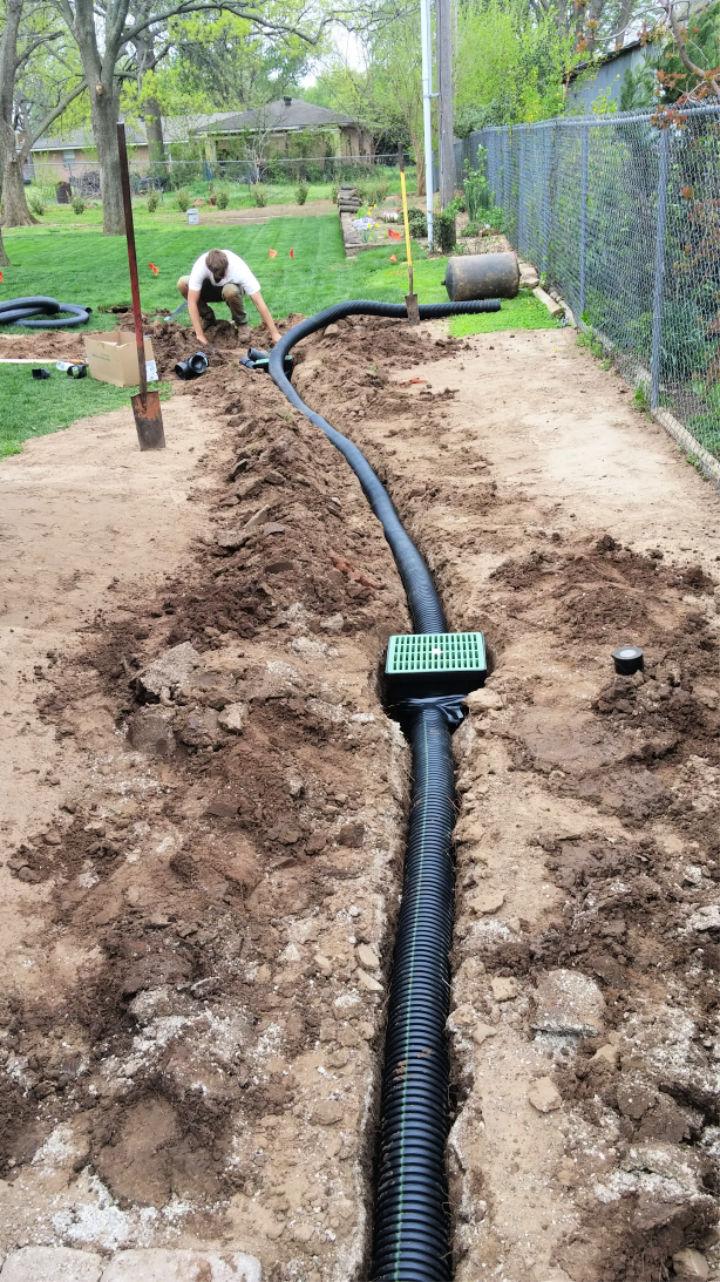
Struggling to choose between a French Drain and a Surface Drain for your drainage needs? Oklahoma Drainage offers expert advice to help you make an informed decision. Learn the distinct purposes of each drain type and how they cater to different water issues in your landscape. Discover practical DIY tips for identifying surface and sub-surface water, and understand why soil type matters.
With clear guidance on when to use each drainage solution, you can confidently address your water management concerns. Remember, functionality and aesthetics can both play a role in your choice, so consider what’s best for your property. For more details on installing the right drainage system, read on for valuable insights.
12. DIY Underground Gutter French Drainage
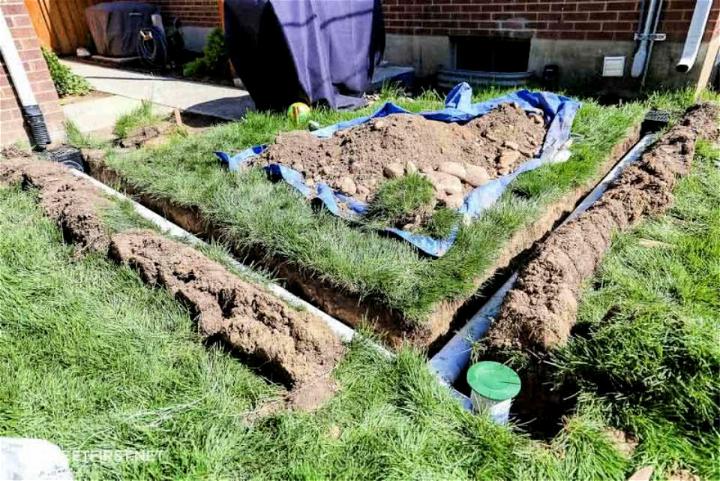
Protect your home’s foundation from water damage by installing an underground gutter drainage system, often referred to as a French drain. Megan Taylor of TwoFeetFirst provides a comprehensive DIY guide to help homeowners effectively redirect rainwater away from their property. The tutorial covers the entire process, from digging trenches to laying drain pipes, ensuring a proper slope for water flow, and setting up a catch basin and pop-up emitter.
The instructions are clear, easy to follow, and include a list of materials and tools required. With an estimated self-installation cost of around $105, this affordable solution can offer peace of mind during heavy downpours, keeping your basement dry and soil stable.
13. French Drain Installation Fact Sheet
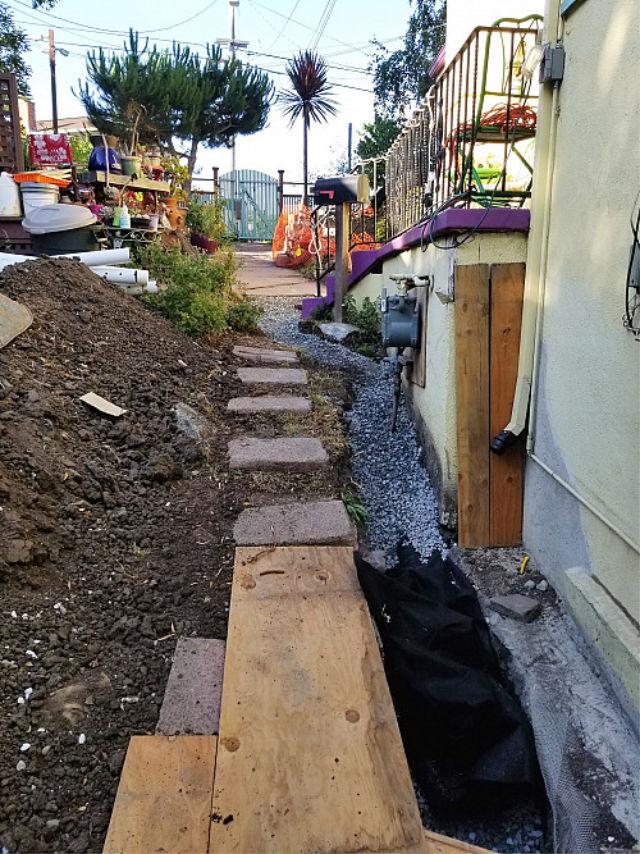
Protect your home from water damage with expert French drain installation. French drains are an effective solution for directing groundwater away from your home’s foundation and preventing basement flooding. Learn how these systems work, when they’re necessary, and the steps involved in installation.
For homeowners dealing with excess moisture or water pooling in their yards, a French drain might be the answer. Networx Systems, Inc. offers insights on the installation process and the benefits of having a French drain to safeguard your property. Get informed and keep your home dry and secure.
14. Making a French Drain Around the House
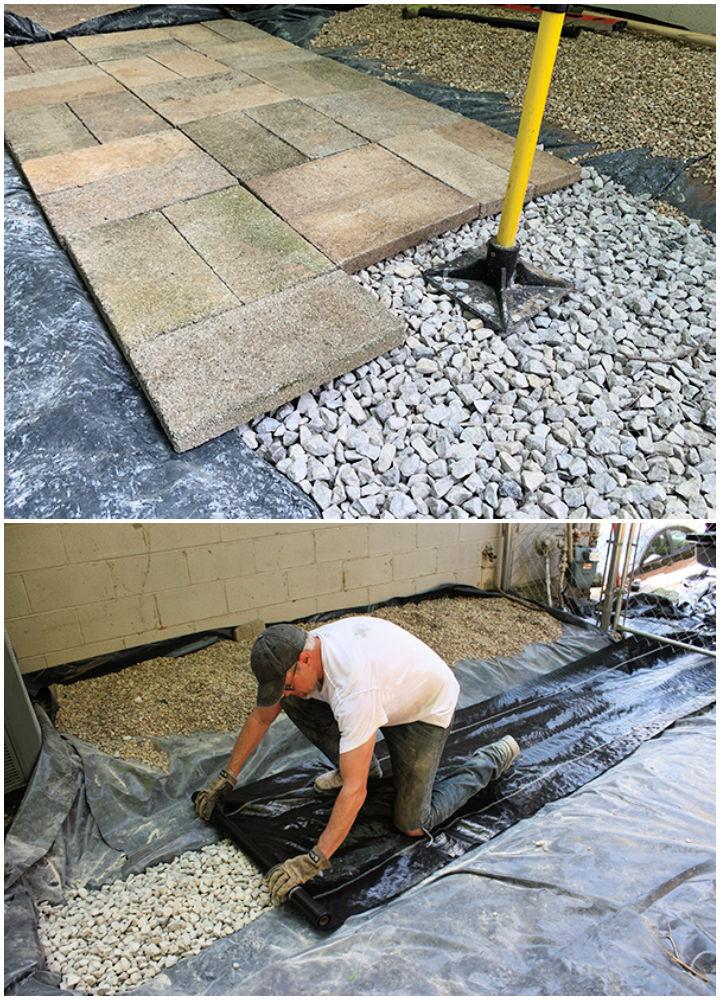
Dealing with a leaky basement can be a homeowner’s nightmare, but installing an exterior foundation drain might be the solution you need. At Extreme How To, we provide a comprehensive guide on creating an effective drainage system to keep your basement dry. Learn how to plan your project, from calling utility services to excavating and laying down pipes and gravel.
Our instructive content helps you tackle each step with confidence, ensuring a successful outcome that channels water away from your foundation, safeguarding your home against unwanted moisture. With clear, helpful advice, you’ll be equipped to manage rainwater runoff and maintain a dry basement, even during the heaviest downpours.
15. Beginner’s Guide to Make a French Drain
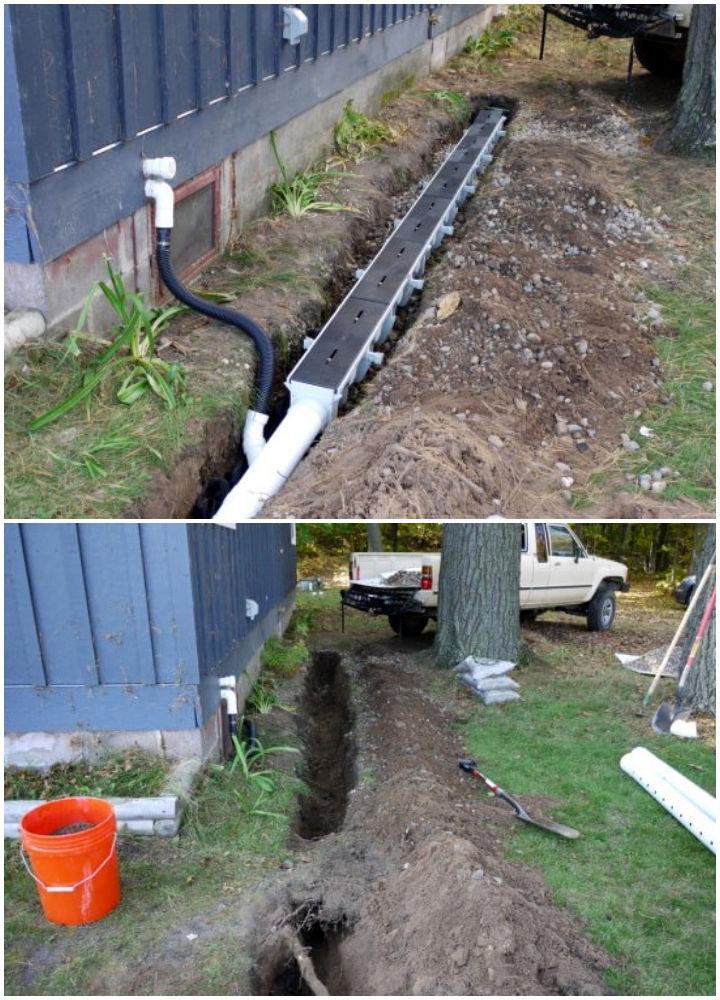
Installing a French drain is a practical solution for managing water issues in basements and crawl spaces. Cabin DIY provides a thorough guide to creating an efficient drainage system, combining surface trench and French drains in a single trench approach. Step-by-step instructions are laid out with clarity, from planning and digging to building and installing the drain components.
This guide ensures homeowners can effectively redirect water away from their property, protecting their home’s foundation and interior spaces from moisture damage. With instructive, helpful tips, readers can confidently tackle their water drainage projects for a drier and healthier living environment.
16. Budget-Friendly DIY French Drain
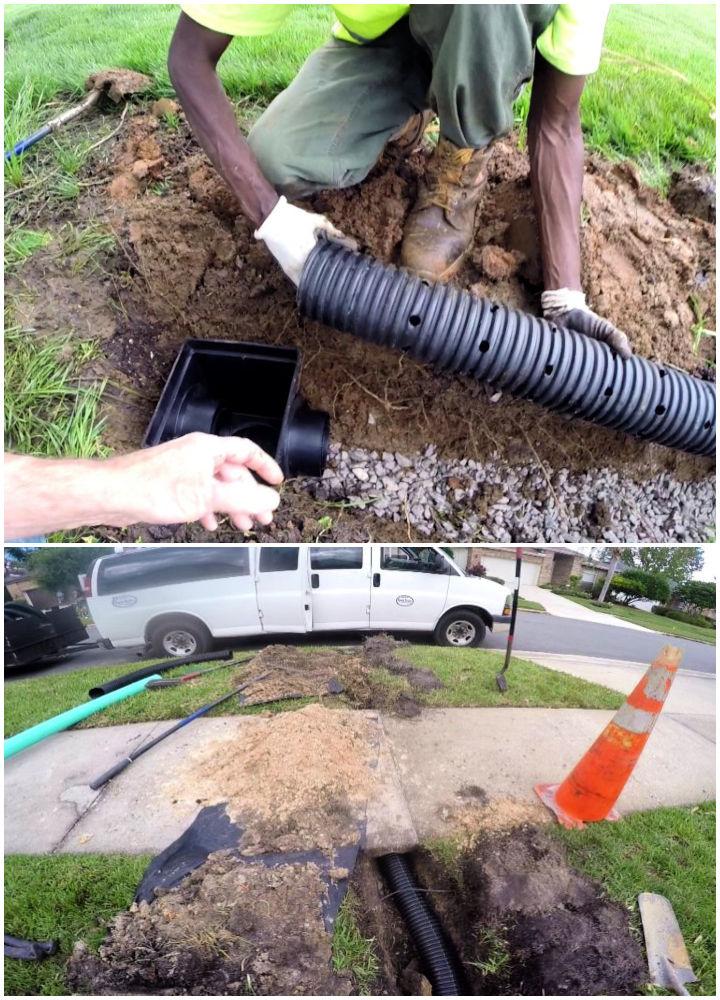
Tackling water drainage issues in your yard can be a rewarding DIY project, and Apple Drains Orlando offers a comprehensive guide on installing a French Drain system yourself. With clear instructions, you’ll learn to select the right materials, such as perforated pipe and gravel, and the necessary tools for the job.
Their step-by-step approach ensures that even those new to home improvement can successfully manage surface and subsurface water run-off. By following this guide, you can enhance your property’s drainage, protect your home’s foundation, and gain a sense of accomplishment from completing the project on your own.
17. How to Build a French Drain Under $250
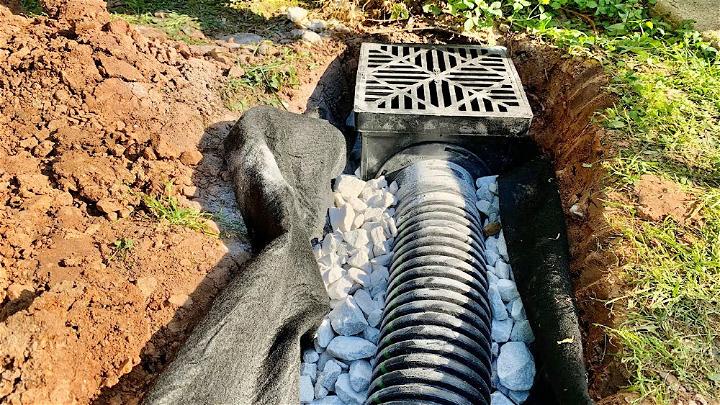
Installing a DIY French Drain can be a game-changer for your yard’s drainage issues, and Gear Know-How’s YouTube tutorial shows you how to do it for under $250. This comprehensive video guides you through the entire process, from the necessary materials to the final installation. If you’re dealing with water accumulation in your garden or near your home’s foundation, learning how to construct a French Drain can provide an effective and affordable solution.
With a clear, step-by-step approach, the video ensures an engaging and educational experience, making it accessible for homeowners ready to tackle their landscaping challenges. Watch the full installation and equip yourself with the know-how to improve your outdoor space’s drainage system.
18. Cheap and Easy DIY French Drain
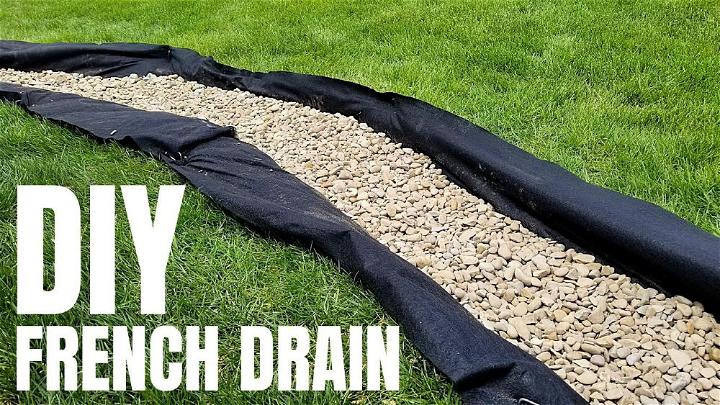
Struggling with poor yard drainage and looking for an affordable solution? YouTube’s “That Tech Teacher” has you covered with a comprehensive DIY French Drain tutorial. Ideal for homeowners eager to tackle water management issues, this video guides you through a step-by-step process to create a functional and long-lasting drainage system.
Learn how to properly remove sod, dig trenches, and select the right materials—such as non-woven geotextile drainage fabric and washed river gravel—to ensure your drain remains effective for years. This informative and engaging guide promises professional-grade results without breaking the bank, making it a must-watch for those ready to enhance their property’s drainage.
19. Installing an In-Ground Backyard Drainage System
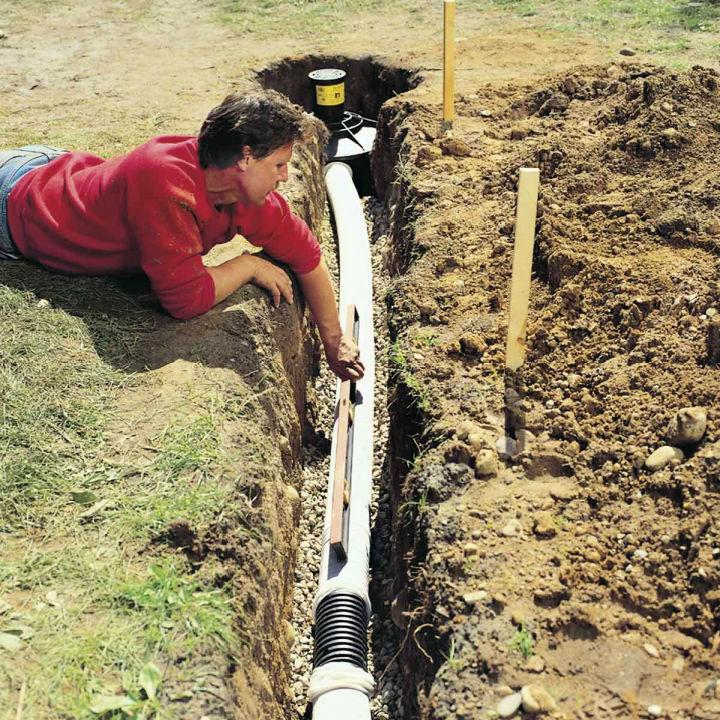
Struggling with a wet yard or water pooling near your home’s foundation? Family Handyman guides you through the installation of an in-ground drainage system to solve these issues for good. This comprehensive walkthrough ensures you’ll have the know-how to tackle excess rainwater effectively.
With a detailed step-by-step approach, you can embark on this project with confidence, even if you’re new to DIY landscaping. From digging the trenches to laying the drain pipes, you’ll learn how to create a long-term solution that keeps your yard dry and protects your home from water damage. Get ready to transform your soggy outdoor space with a functional and reliable drainage system.
20. Make your Own French Drain System
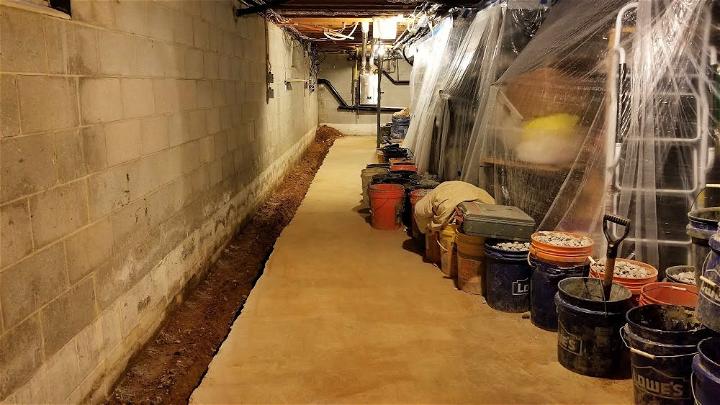
Embarking on a French drain installation project can be daunting, but with the right guidance, it’s a task that can significantly improve your property’s drainage. Desert Dry Waterproofing’s recent video showcases the meticulous process of installing a French drain on day one of a three-day endeavor. Their team, based in Sewell, NJ, demonstrates the careful excavation and preparation needed to ensure a successful outcome.
For homeowners facing water management issues, this video provides a clear look at the steps involved and the expertise required. By viewing this installation, you’ll gain insight into the equipment used, the importance of proper trench depth, and the materials that facilitate effective water diversion. It’s an invaluable resource for those considering similar waterproofing measures to protect their basements from moisture intrusion.
Conclusion:
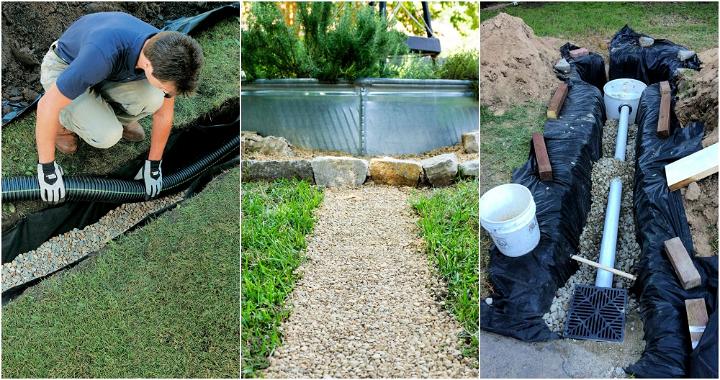
In conclusion, mastering the DIY French Drain installation can be a game-changer for maintaining a dry and healthy outdoor space. Our comprehensive guides make it achievable to construct a reliable drainage system that not only prevents water damage but also boosts your property’s appeal and value. By following the clear steps provided, you can save money while enhancing the health of your garden. So, if you’re ready to take control of your yard’s water management, “20 Easy DIY French Drain Installation Guides To Save Money” is your essential read.
